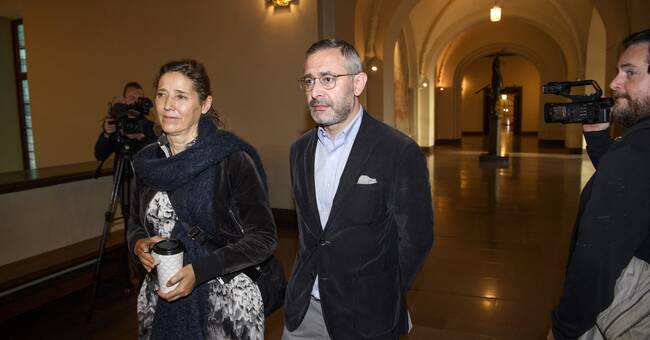Aron Flam has infringed on the illustration A Swedish Tiger by Bertil Almqvist - that is what prosecutors and the Emergency Preparedness Museum Foundation, which owns the copyright, say.
Among other things, Flam has a variant of the tiger that heals on his book "This is a Swedish tiger" about Swedish culture of silence during the Second World War.
Aron Flam's defender Monique Wadsted claims during the main hearing that A Swedish tiger is more of a logo and thus has a "weak scope of protection".
In addition, Bertil Almqvist himself (died 1972) never claimed A Swedish Tiger as his work, but it should be considered an art director assignment, she says.
"Would have had no objection"
Almqvist himself used the tiger as a symbol of a culture of silence as a satirist in Aftonbladet in 1954.
- This illustration has become known because it was used by the government and is a symbol of Sweden during this time, but also of censorship and culture of silence.
Bertil Almqvist himself has used it that way.
I do not see that he would have had any objection to another satirist using it to criticize Nazi Germany, says Monique Wadsted.
Aron Flam himself emphasizes during interrogation that his tiger is his own.
- I have not used Bertil Almqvist's tiger, I make collages, bake them into context, give them a new meaning and create independent works, he says.
Promised to protect the image
Almqvist's daughter Christina Billgren says that her father was "very proud" of A Swedish Tiger and that he had not liked Flam's variant.
- He had become quite angry.
He wanted his things for himself, he did not like when people picked with his stuff.
His picture was his picture, she says.
The Foundation Emergency Management Museum's chairman and lawyer Marie Andrée says that it does not matter what Bertil Almqvist had thought.
The Emergency Preparedness Museum received the financial right in 2002 and has since defended the work.
- I looked up the daughters and agreed that the museum would acquire the copyright.
They wanted the image to go down in history and be used historically.
If the image is distorted, used politically or used where it does not belong, I promised to act and I have kept that promise.
That is why the foundation got the rights, says Marie Andrée.
- When the spread becomes so large, a moment 22 arises. If you do not intervene, the spread continues.
If you intervene, it can be perceived as if it is the copyright holder who is infringing, that is how it has become in this case, says prosecutor David Ludvigsson.

